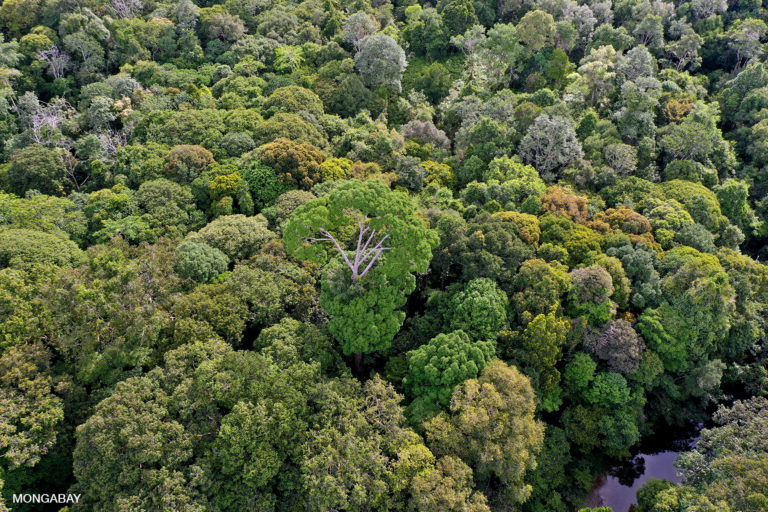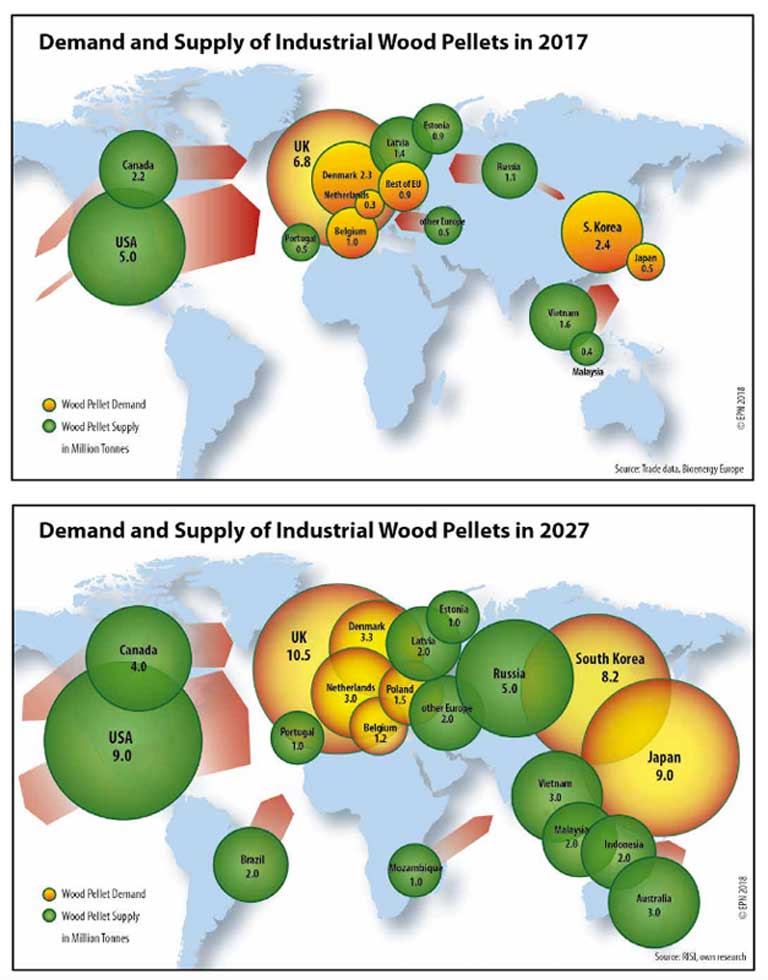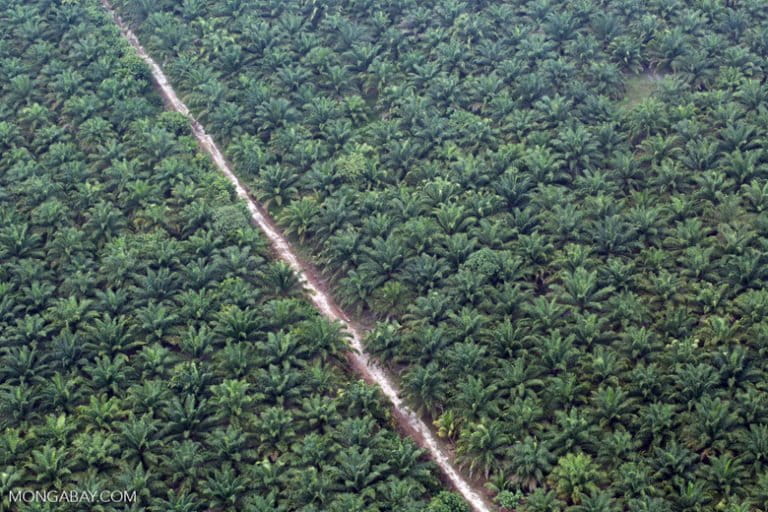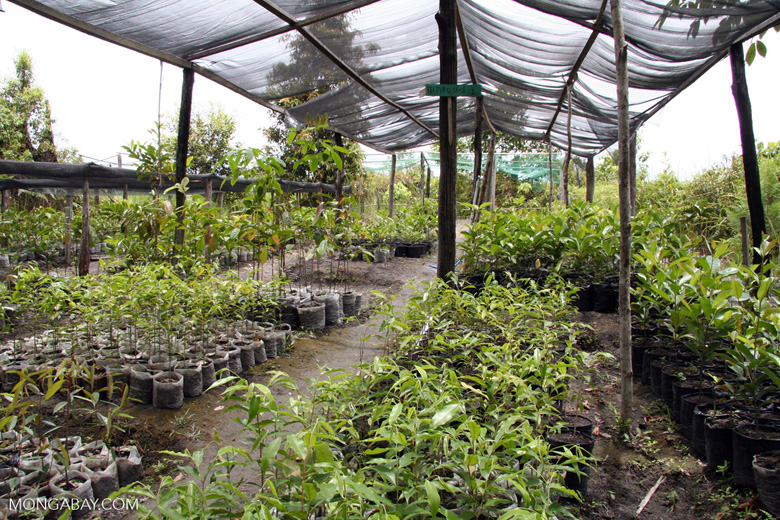COP26 Glasgow Declaration: Salvation or threat to Earth’s forests?
Nov 3, 2021
- The U.N. climate summit underway in Glasgow, Scotland, served as a venue this week to announce the Glasgow Declaration on Forests and Land Use to the world. Signed by 100 countries representing 85% of the globe’s forested land, it pledges to end or reduce deforestation by 2030.
- The declaration comes on the heels of the failed 2014 New York Declaration for Forests–which had more than 200 national, private and civil service supporters–that promised to cut deforestation by 50% by 2020 and end it by 2030. Since then, deforestation has risen, contributing an estimated 23% of total carbon emissions.
- While some hailed this week’s Declaration, others warned that it’s $19.2 billion could be used to convert natural forests to plantations, which under current U.N. rules are counted as “forests.” Plantations to produce palm oil, paper or wood pellets (burnt to make energy), lack biodiversity and are less efficient at storing carbon.
- Said one NGO critical of the Glasgow Declaration: “Just as we must wind down use of fossil fuels, it’s also time for the industrial logging development model to be retired. Countries should apply an absolute moratorium on any further conversion of [natural] forests [to industrial plantations] — whether technically ‘legal’ or ‘illegal.’“
In what was hailed Tuesday as the first major achievement of the United Nations climate summit in Glasgow, Scotland (COP26), more than 100 countries, representing 85% of the globe’s forested land, pledged to end or reduce deforestation by 2030.
Among the signatories to the Glasgow Leaders’ Declaration on Forests and Land Use are Brazil and Indonesia, two nations with the world’s largest tropical forests — forests that have been greatly diminished in recent years to make way for cattle ranches as well as oil palm and soy plantations. Brazil’s current government, led by President Jair Bolsonaro, had been previously resistant to all major attempts to curb rising Amazon deforestation in his nation.
Other signees include the United Kingdom and the largest nations in the European Union, each of which are enormous consumers of woody biomass for energy generation, half of which comes from native forests. The United States, Canada and Russia, the world’s leading producers of wood pellets for export, to be burned as a coal substitute, also signed on.

A controversial initiative
Forest-advocacy NGOs have been waging a relentless battle to slow the growth of biomass-for-energy, and to end what they’ve documented in parts of the world as widescale clear cuts of mature and old-growth forests and their habitats to supply wood pellets for burning by the E.U., U.K. and other nations whose policies declare biomass to be “carbon neutral.”
Those NGOs had both praise and criticism for the Glasgow Forest Declaration, which is backed by $19.2 billion in national and private funds to support forest protection efforts.
Mary Booth, director of the U.S.-based Partnership for Policy Integrity and an expert on biomass science and policy, applauded the initiative as an “important and welcome step forward, particularly given its recognition of the role that Indigenous communities play in protecting forests. While the implementation of the declaration will obviously be key, it is encouraging to see such consensus emerge.”

Government and private funders at COP26 this week pledged $1.7 billion to support Indigenous and local communities’ land tenure rights in recognition of the role they play in protecting forests and climate change mitigation.
However, Booth cautioned: “It is important to recognize that the declaration’s focus on deforestation, which implies permanent loss of forests when land is converted to some other use like agriculture or development, means it is nearly silent on the role of traditional logging in driving forest degradation. Logging can destroy forest biodiversity and carbon stocks so that the end result is nearly indistinguishable in its impacts from true deforestation.”
Activists fear that this silence may speak volumes.
Does the Glasgow Declaration have a logging loophole?
Industrial logging, whether in the Southeastern U.S., British Columbia or Eastern Europe, is now inextricably linked to wood pellet production. The E.U., for example, burns nearly 40 million metric tons of wood pellets annually for energy and heating, accounting for nearly 60% of its “renewable energy portfolio.” The U.K., a COP26 co-host with Italy, is also the world’s largest consumer of wood pellets for energy.
Meanwhile, ballooning global projections for wood pellet supply and demand by 2027 (especially demand in the U.K., E.U., Japan and South Korea) seem to run counter to the Glasgow Forest Declaration’s promise to end deforestation. Currently, natural forest is routinely clear cut in the U.S. and Canada to provide wood pellets, with those forests often then replaced by tree plantations.
“[W]e cannot credibly claim to protect the world’s forests while continuing to log hundreds of millions of hectares of irreplaceable primary forests each year,” said Cyril Kormos of Wild Heritage, an NGO in the U.S. “Addressing deforestation without addressing industrial degradation amounts to taking one step forward and two steps back.”


Still, the Glasgow Declaration itself sounds in many ways like what forest-advocates have been demanding for years, especially in light of Article 5 of the 2015 Paris Agreement. That article commits nations to “reducing emissions from deforestation and forest degradation” by conserving and enhancing forests especially in developing countries as “sinks and reservoirs” for greenhouse gas emissions to help slow the rate of global warming.
The Glasgow signees, the declaration says, “emphasize the critical and interdependent roles of forests of all types, biodiversity and sustainable land use in enabling the world to meet its sustainable development goals; to help achieve a balance between anthropogenic greenhouse gas emissions and removal by sinks; to adapt to climate change; and to maintain other ecosystem services.”
In addition to the deforestation pledge, 28 countries also promised to work to remove deforestation from the global supply chain for goods such as palm oil, soy and cocoa. And 30 financial institutions covering more than $8.7 trillion in assets agreed to eliminate investment in commodity-driven deforestation. There are potentially powerful forest-protection measures in the declaration — if it is faithfully implemented.

But that “if” looms large. The Glasgow Declaration would not be needed if the 2014 New York Declaration for Forests, which boasted more than 200 national, private and civil service supporters, had been successful. It promised to reduce deforestation by 50% by 2020 and end it by 2030. Since then, deforestation has only risen, contributing what the U.N. Intergovernmental Panel on Climate Change estimates as 23% of total carbon emissions, as forestland is steadily cleared for agriculture, with trees cut for timber and other uses, or burned as wood pellets.
Global Forest Watch reported that the world lost roughly 25.9 million hectares (nearly 100,000 square miles) of tree cover (an area roughly the size of Colorado) to deforestation in 2020 — much of it in the tropics.

Room for optimism… and caution
Optimists at COP26 preferred to see the Glasgow Declaration as a potential turning point for forest preservation — the most effective means we have of removing greenhouse gases from the atmosphere and storing it above and below ground. Likewise, biomass industry advocates continue to argue that they do not clear cut forests, but rather manage them with selective culling, which they say is good for forest health and for curbing climate change.
U.S. President Joseph Biden said he would take a “whole of government” approach to protecting forests, vowing to work with a thus-far intransigent Congress to grant $9 billion for forest protection. Colombia committed to protecting 30% of its territory by the end of next year, and Costa Rica is successfully paying farmers to protect forests around their farms.
But precise language in the declaration does not appear to address the growing demand for wood pellets, not just in Europe but increasingly in Japan and South Korea, and the threat it poses to global forests. The troubling loophole: Under U.N. definitions, it’s not technically deforestation if the land is not developed into other commercial uses, or if it’s replanted as tree farm plantations.
Significantly, many studies have shown that tree plantations lack the carbon storing capacity of natural forests and do not harbor biodiversity; this includes plantations devoted to timber and wood pellet production.

“Protecting and restoring the forests and natural ecosystems of the world is fundamental to tackling climate change, but these words will ring hollow if leaders don’t simultaneously stop encouraging forest biomass energy,” said Peg Put, with the Environmental Paper Network, a worldwide network of 140 civil society organizations headquartered in Australia.
“This rapacious fake renewable is scouring the planet for forests to burn, subsidized and expanding the reach and intensity of logging natural forests, while also encouraging land grabbing for huge swathes of plantations. [In the process] it emits as much CO2 as does burning coal and is making climate change worse,” she said.

Peter Riggs, director at U.S. forest protection NGO Pivot Point, and a Mongabay board member, asked: “So how could this new pledge make a difference [where others have failed]? It could do better in three ways. First, countries would acknowledge that improvement in Indigenous rights and tenurial security itself constitutes a climate solution.
“Second, improve financial and technical assistance to more fully represent the role of the land sector in Nationally Determined Contributions [to carbon emission reductions].
“Last but most important — just as we must wind down use of fossil fuels, it’s also time for the industrial logging development model to be retired. Countries should apply an absolute moratorium on any further conversion of forests [to plantations] — whether technically ‘legal’ or ‘illegal.’ “
Booth concluded: “The Declaration [is unlikely] to be invoked as a reason to stop the clearcutting of native forests in the U.S., Canada, and forested E.U. countries like Estonia where the pellet industry has taken hold. The biggest pellet companies responsible for clearing forests … are always eager to announce that they ‘don’t cause deforestation,’ as indeed they don’t, according to the formal definition employed in the declaration.”
Banner image: A reforestation project in Kalimantan, Borneo, Indonesia. Image by Zuzana Burivalova.
Justin Catanoso, a regular Mongabay contributor, is a professor of journalism at Wake Forest University in North Carolina. He is covering COP26 from Glasgow, his seventh climate summit. Follow him on Twitter via @jcatanoso.
Related listening from Mongabay’s podcast: Reforestation is booming, but deforestation rose last year, listen here:
FEEDBACK: Use this form to send a message to the author of this post. If you want to post a public comment, you can do that at the bottom of the page.
